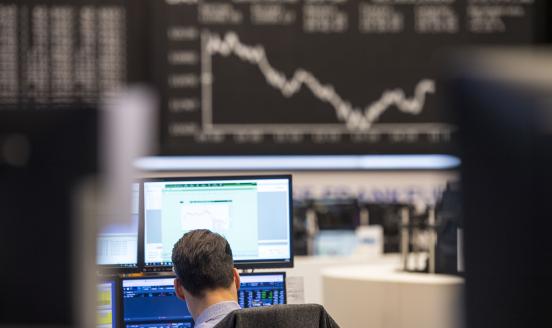There are no shortcuts to finance
The basic underpinnings of regulation, reserves and (legal) recourse are missing in decentralised finance, or DeFi.
The three Rs of regulation, reserves and (legal) recourse are crucial for the smooth functioning of financial markets. These basic underpinnings are missing in decentralised finance, or DeFi, the segment of financial services that includes cryptocurrencies, primarily stablecoins.
Unlike the traditional financial system, the only criteria for being able to participate in DeFi is ownership of crypto assets. DeFi supporters argue that it has ‘democratised’ financial services by providing equal access rights to all. In contrast, traditional finance regulation requires the creditworthiness of lenders to be assessed and may exclude participation for some. At the same time adequate reserves of the right quality are required in order to back risk-taking.
Despite representing only about 1% of the global financial system, the crypto ecosystem can still pose risks to financial stability. In a recent speech, European Central Bank executive board member Fabio Panetta argued that crypto assets are still bigger than the sub-prime market before 2008, the collapse of which started the global financial crisis.
But equal access has come with great turbulence, especially in 2022. The wave of regulation that the EU and US are now implementing, as welcome as it is, does not deal with the issue that DeFi operates mostly with inadequate reserves. This makes the system unstable and subject to fraud.
The example of the collapse of FTX is very indicative in this sense. FTX was a decentralised crypto exchange platform, equivalent to a traditional stock exchange. It held clients’ assets for extended periods of time and facilitated their trading. In November 2022, a report written by CoinDesk revealed that the bulk of the company’s positions and assets were not held in fiat currency or other cryptos, but in its own native crypto, called FTT. There was not sufficient diversification in the underlying assets, something which raised concerns about the viability of the company.
This pushed investors to demand their deposits back, to the sum of $5 billion, which FTX could not cover. With only $900 million worth of sellable assets against $9 billion in liabilities, FTX filed for bankruptcy on 11 November 2022. Its collapse exposed a lot of financial institutions to losses, bringing to light the links between DeFi and traditional finance. Lack of due diligence in the form of absent corporate controls and poor risk analysis were pointed out as causes for this bankruptcy and emphasised the need for regulation.
TerraUSD, the third largest algorithmically backed stablecoin, was the first to collapse in May 2022. This raised doubts about how stable such crypto assets can be, but this time it was not the quality of reserves that generated distress. The TerraUSD stablecoin did not proclaim to be stable because it had the backing of credible collateral assets. Instead, it was an algorithm that adjusted the supply of the currency in an arbitrage trading strategy with a sister cryptocurrency (Luna). This was done automatically by maintaining a nominal peg to the dollar.
What TerraUSD promised to do was to provide stability by just managing the currency peg to the dollar, but without any dollar (or other real-world) assets. Without any reserves to anchor the value of the TerraUSD, it offered a deposit rate of 20% to attract new users and investors. For as long as the peg could be held and the sister cryptocurrency generated enough profits, the system was viable. But as soon as confidence in the sustainability of the peg started to crumple, which it did in May 2022, the peg broke and the system collapsed[1].
Other events followed. The collapse of TerraUSD spilled over to Tether, the largest stablecoin pegged to the dollar, which initially saw a collapse in its price and a big outflow of funds. Tether’s reluctance to reveal the quality of its reserves made investors lose confidence in its ability to support the peg to the dollar, forcing it to eventually break. Those examples show that concerns over the activity of crypto companies are not exaggerated. Less demand and participation in the market is becoming evident, resulting in more crypto platforms shutting down.
In the past 15 years, since cryptocurrencies first emerged, the macroeconomic environment in which they were created was conducive to risk-taking. Interest rates were very low for prolonged periods of time and stakeholders were keen to take on risk and to explore new ideas, particularly ideas that presented important innovations.
As interest rates are now increasing and are expected to stay high, the appetite for a ‘search for yield’, the motive for seeking risk, is also diminished. But more importantly, the examples shown above demonstrate that financial services that operate in a ‘wild west’ are vulnerable to fraud and bound to lead to abrupt losses. This is a useful reminder that the rules and regulations that govern the traditional financial system have been adopted for good reasons.
[1] See Box A of Chapter III of BIS (2022) for a good description of the financial engineering behind TerraUSD-Luna and dollar peg.



